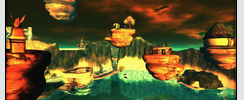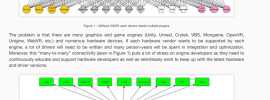This TED talk by Tom Wujec helps explain why virtual worlds are powerful environments for creating meaning and memory. Our eyes take in visual data that gets processed in many parts of the brain. The ventral stream figures out what we are looking at. The dorsal stream makes a mental map. The limbic system generates an emotional reaction.
Wujec discusses the importance of creating visual persistence using comples graphics that let our eye dart around or by collaborating in the creation of wall-sized planning charts.
But these ideas also relate to the powerful persistence afforded by virtual worlds where the immersion is complete and distractions are eliminated. In immersive virtual environments, the brain has time to adjust to the setting, process visually and emotionally, and maybe most importantly, make a mental map which can allow for longer term retention of memories and their associated meanings.

